In an era of rising energy costs and growing environmental consciousness, optimizing your home’s energy consumption is no longer just a trend – it’s a necessity. Imagine a living space that intelligently manages its own energy use, adapting to your routines and saving you money without you lifting a finger. This vision is now a reality thanks to smart home energy savings automation. This article will guide you through “Smart Home Automation: 7 Hacks for Massive Energy Savings,” providing actionable insights to transform your home into an energy-efficient haven. By embracing smart technology, you can significantly reduce your utility bills and contribute to a more sustainable future.
Here are seven essential hacks for achieving massive energy savings in your smart home:
- Optimize Your Climate Control with Smart Thermostats
- Illuminate Responsibly with Smart Lighting Systems
- Eliminate Phantom Power with Smart Plugs & Outlets
- Leverage Automated Window Coverings
- Embrace Geofencing and Presence Detection
- Monitor and Manage with Home Energy Monitoring Systems
- Integrate for Maximum Efficiency with Smart Home Integration Platforms
How Smart Home Automation Delivers Massive Energy Savings
Smart home technology represents a paradigm shift in how we interact with our living environments, offering unprecedented control and automation that directly translates into significant smart home energy savings. These intelligent systems are designed to learn your habits, respond to environmental changes, and optimize resource usage, making them incredibly effective at reducing your utility bills. Studies indicate that smart homes can reduce overall energy consumption by an average of 30% and peak demand by up to 20% [14]. This answers the common question: “Do smart homes really save energy?” The answer is a resounding yes, by proactively managing various energy-consuming aspects of your home.
Smart technology contributes to energy savings by eliminating waste. For instance, instead of heating or cooling an empty house, smart systems can adjust temperatures based on occupancy. Similarly, lights won’t be left on unnecessarily, and appliances can be optimized for energy-efficient operation [1]. This level of automated energy conservation at home means you can drastically lower your energy bill with a smart home, resulting in substantial smart home cost savings energy. The integration of various energy-efficient smart devices into a cohesive system allows for holistic management, ensuring that every watt is utilized thoughtfully.
7 Hacks for Massive Energy Savings with Smart Home Automation
1. Optimize Your Climate Control with Smart Thermostats
One of the most impactful upgrades for smart home energy savings is the installation of a Smart Thermostat. Devices like Nest and ecobee learn your family’s schedule and temperature preferences, automatically adjusting heating and cooling to maximize comfort while minimizing energy waste [12]. They prevent unnecessary energy consumption by turning down HVAC systems when you’re away or asleep. For example, Nest estimates average savings of roughly $140 per year on energy bills, with smart thermostats saving customers between 10-12 percent on heating and 15 percent on cooling [10]. This clearly demonstrates why smart thermostats are worth it for energy savings, making them a cornerstone of smart thermostat energy savings strategies.
These intelligent devices go beyond simple programming; many can detect when a window is open or integrate with local weather forecasts to pre-heat or pre-cool your home efficiently. The ability to control your heating and cooling remotely via a smartphone app also means you can make adjustments on the go, ensuring your home is comfortable only when needed. Understanding how does smart home work guide can further illuminate the benefits of these integrated systems.
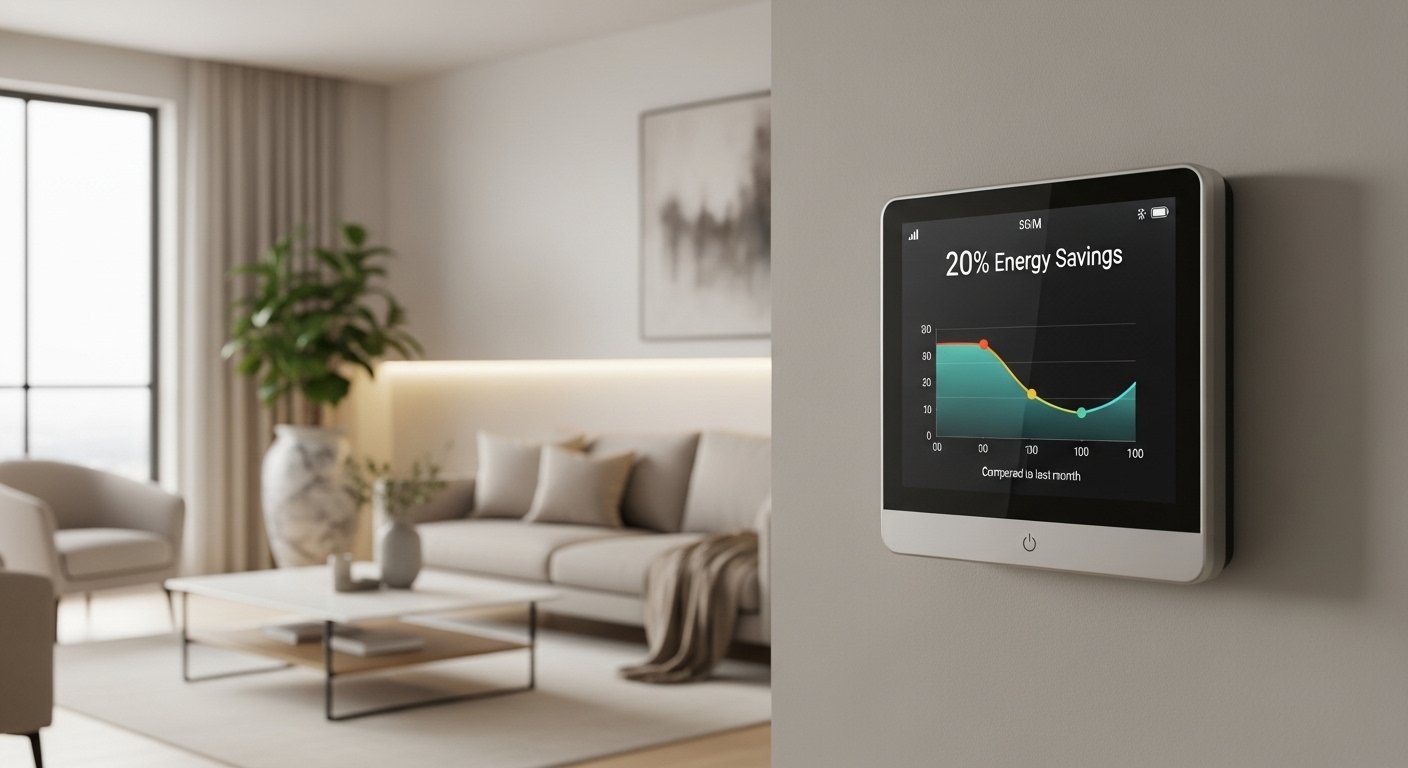
2. Illuminate Responsibly with Smart Lighting Systems
Lighting is a significant energy consumer in many households, but Smart Lighting Systems offer a brilliant solution for smart home energy savings. Unlike traditional lighting solutions, smart lighting utilizes energy-efficient LED bulbs that can be controlled remotely, scheduled, dimmed, and even adjusted for color temperature [12]. This level of control allows for precise energy management, ensuring lights are only on when and where they are needed, and at the appropriate brightness. Smart lighting systems offer substantial energy savings, reducing overall lighting costs by 35% to 70%.
What distinguishes smart lighting from traditional lighting solutions is its ability to integrate with sensors. Motion and occupancy sensors can automatically turn lights off in empty rooms, preventing wasted electricity. Many systems also feature ambient light sensors, which adjust brightness based on natural light levels, further enhancing smart lighting energy efficiency. This automated approach means you get optimal illumination with significantly reduced energy consumption.
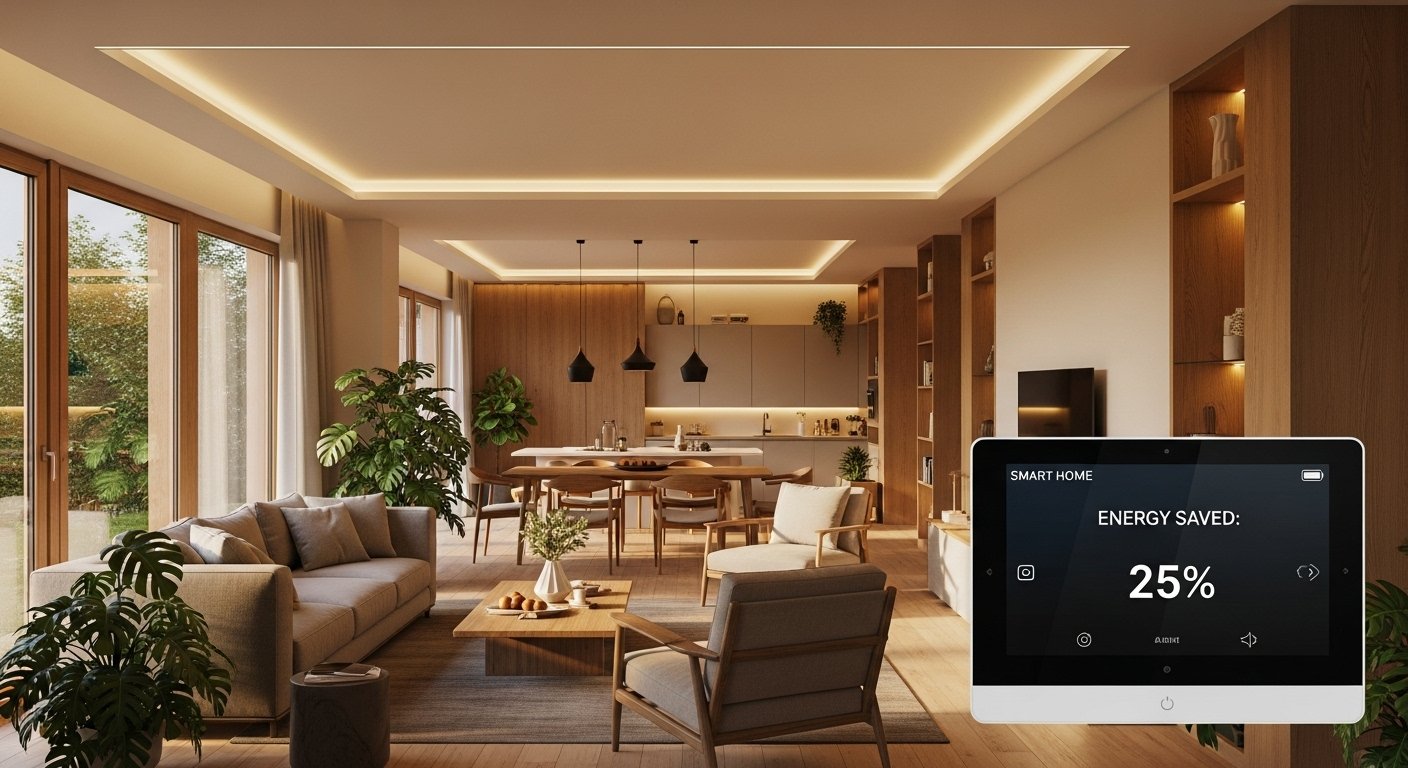
3. Eliminate Phantom Power with Smart Plugs & Outlets
Many electronic devices consume power even when they are turned off or in standby mode – a phenomenon known as “phantom load” or “vampire drain.” This often-overlooked energy waste can silently add up on your utility bill. Smart Plugs & Outlets are simple, cost-effective devices that address this issue head-on, delivering tangible smart home energy savings. By plugging your appliances into smart plugs, you gain the ability to remotely turn off power to these devices completely, eliminating standby power consumption.
How smart plugs save energy is through their monitoring and control capabilities. Many smart plugs come with energy monitoring features, allowing you to track the real-time power consumption of connected devices. This provides valuable insights into which appliances are the biggest energy hogs. You can then schedule these plugs to turn off automatically during certain hours or switch them off remotely via a smartphone app, ensuring that no electricity is wasted. This makes smart plugs energy monitoring a crucial tool for an energy-efficient smart home.
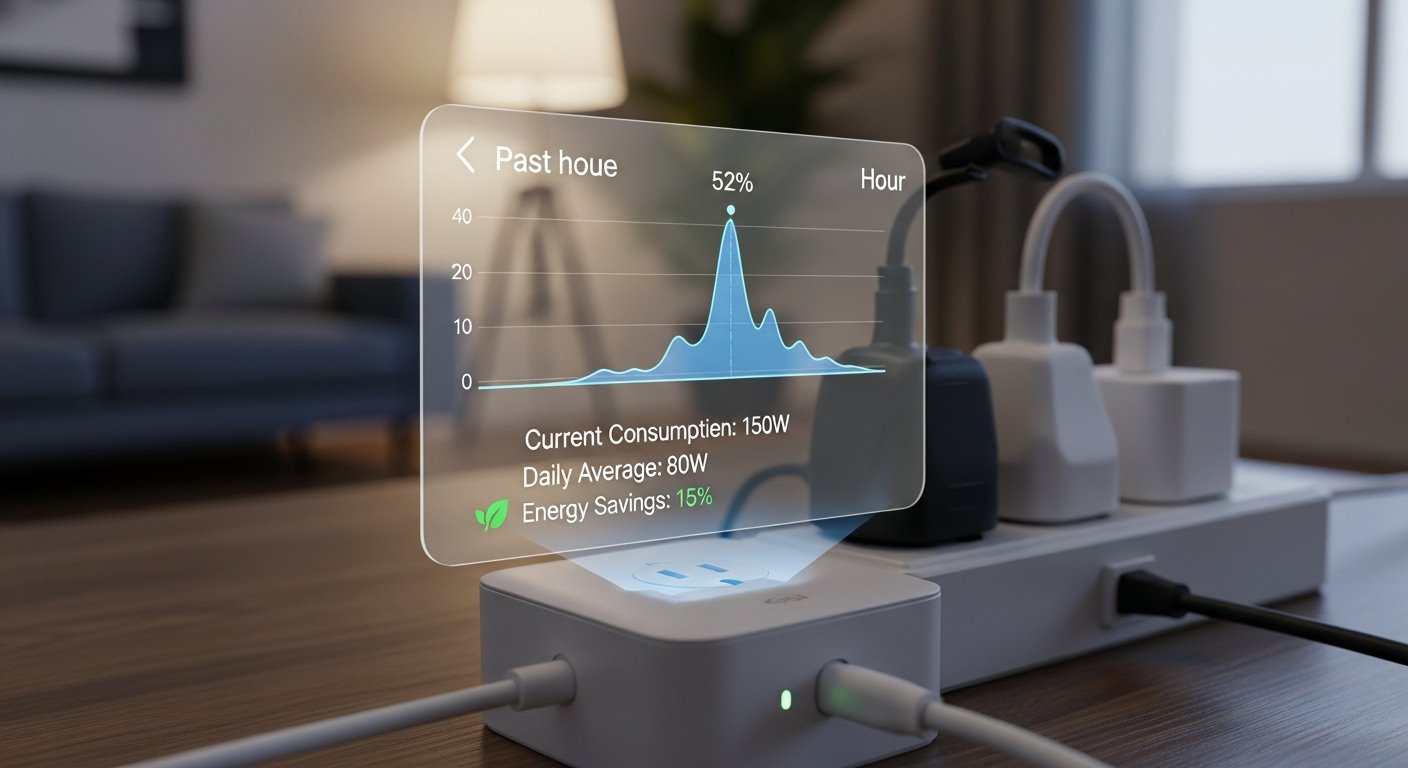
4. Leverage Automated Window Coverings
Your windows are a significant point of energy transfer, allowing heat to escape in winter and enter in summer. Automated Window Coverings (like smart blinds or shades) offer an elegant and effective solution for enhancing smart home energy savings. These intelligent coverings can be scheduled to open and close throughout the day, optimizing your home’s insulation and natural light intake. For instance, they can close during the hottest part of the day to block solar gain, reducing the load on your air conditioning. In winter, they can open during sunny hours to let in warmth, then close at dusk to retain heat.
Integrating motorized smart shades into your home can significantly reduce total energy consumption by up to 30%. This makes them one of the most energy-efficient smart devices for passive climate control. By dynamically managing solar radiation and insulation, automated window coverings play a vital role in an automated home energy management system, helping you reduce energy in your smart home without constant manual adjustments.
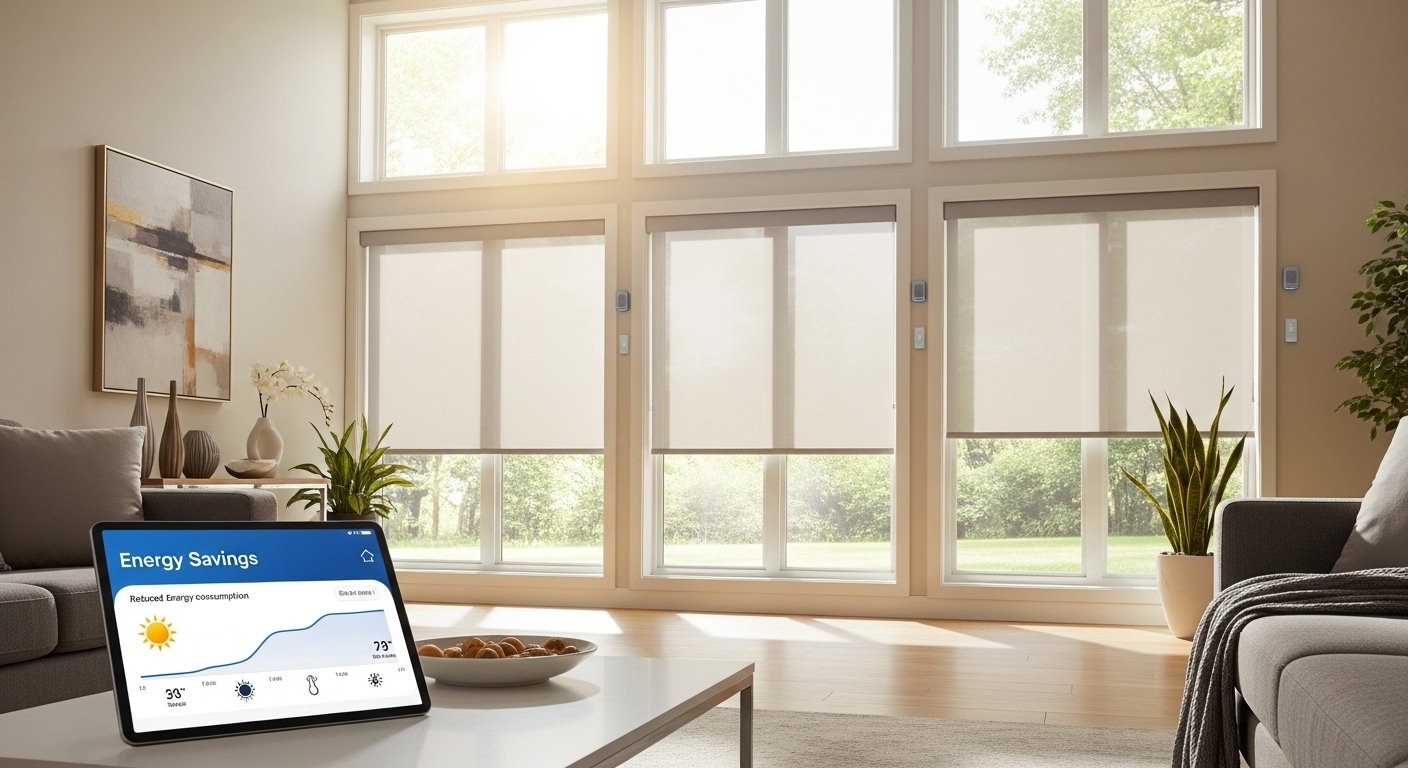
5. Embrace Geofencing and Presence Detection
Geofencing and Presence Detection are advanced smart home energy savings features that allow your home to respond to your actual presence, rather than a fixed schedule. Geofencing uses your smartphone’s location to determine when you leave or approach your home. For example, your smart thermostat can automatically switch to an energy-saving mode when everyone has left the house and begin warming or cooling just before you return. Similarly, presence sensors (like motion detectors or smart door/window sensors) can confirm if rooms are occupied, ensuring that lights and climate control are only active when necessary. This is one of the 7 hidden smart home benefits that often goes unnoticed.
This dynamic automation ensures that energy is never wasted on an empty space, leading to considerable reductions in electricity and heating/cooling costs. By accurately detecting occupancy, these technologies help you reduce energy in your smart home by focusing energy consumption only where and when it’s needed, making your automated energy conservation home truly intelligent.
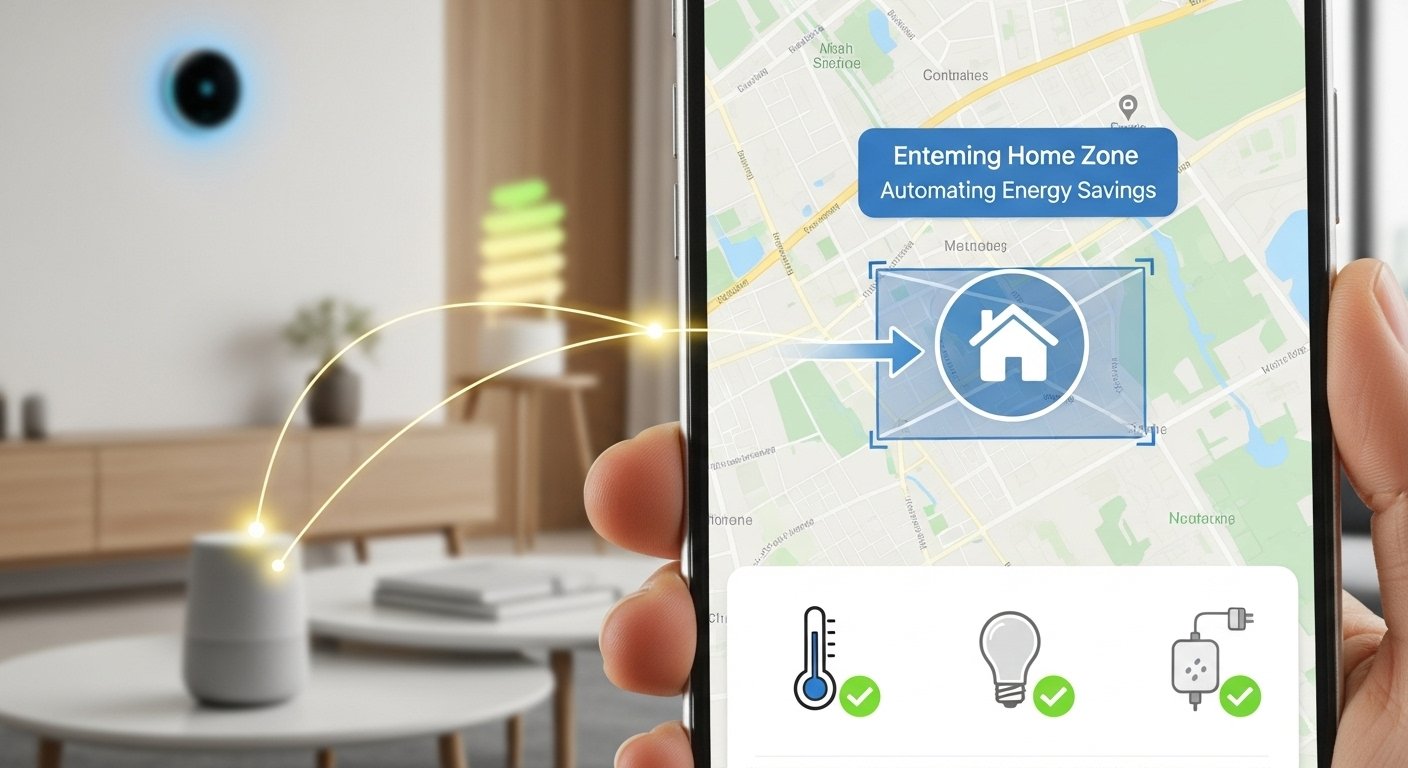
6. Monitor and Manage with Home Energy Monitoring Systems
To truly optimize your smart home energy savings, you need to understand where your energy is going. Home Energy Monitoring Systems provide real-time data and insights into your household’s electricity consumption. These systems can track overall energy usage or even monitor individual circuits and appliances, giving you a detailed breakdown of your power consumption [1]. Knowledge is power, and with this detailed information, you can identify energy hogs, understand your usage patterns, and make informed decisions to reduce waste.
An effective home energy management system empowers you to become an active participant in your energy conservation efforts. You can see the immediate impact of adjustments you make, whether it’s turning off a specific device or changing a thermostat setting. This proactive approach to automated home energy management is key to unlocking the full potential of your smart home for lower utility bills. For an academic perspective on maximizing these savings, consider this research on maximizing energy savings in smart homes through artificial neural network-based artificial intelligence solutions: https://academic.oup.com/fems/article/10/4/223/7311749 [2].
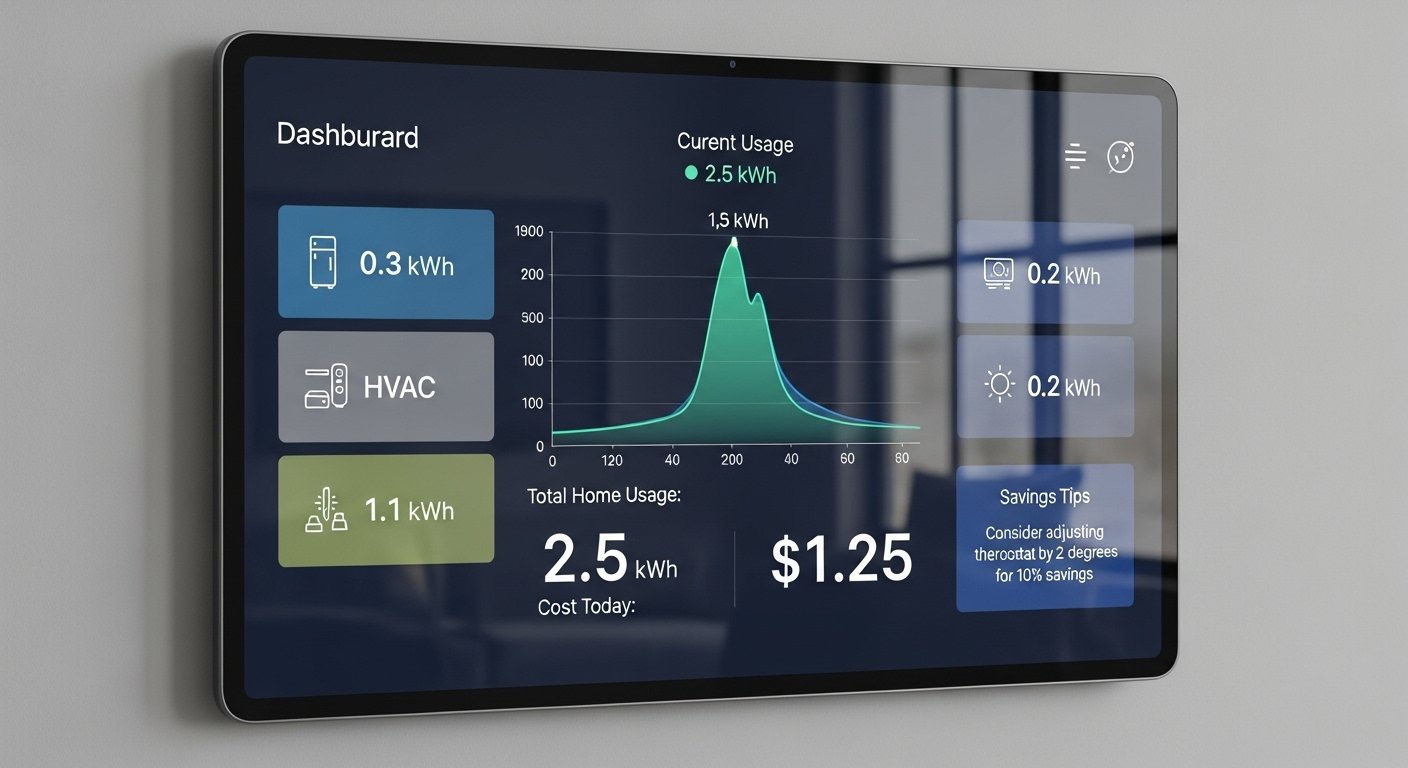
7. Integrate for Maximum Efficiency with Smart Home Integration Platforms
The true power of smart home energy savings comes from the seamless integration of all your smart devices. Smart Home Integration Platforms like Google Home, Amazon Alexa, or Apple HomeKit act as the central nervous system of your automated home, allowing different devices to communicate and work together [1]. This synergy enables complex automation routines that maximize energy efficiency. For example, your smart thermostat can communicate with your smart blinds and smart lighting to create a perfectly optimized environment.
Imagine a “Leaving Home” routine where, with a single command or based on geofencing, your lights turn off, the thermostat adjusts, and smart plugs cut power to non-essential devices. This level of coordinated effort ensures comprehensive energy conservation across your entire home. By leveraging these platforms, you create a truly automated energy conservation home, simplifying management and boosting smart home power consumption tips. Even if you’re building a budget smart home, prioritizing integration can lead to significant long-term savings.
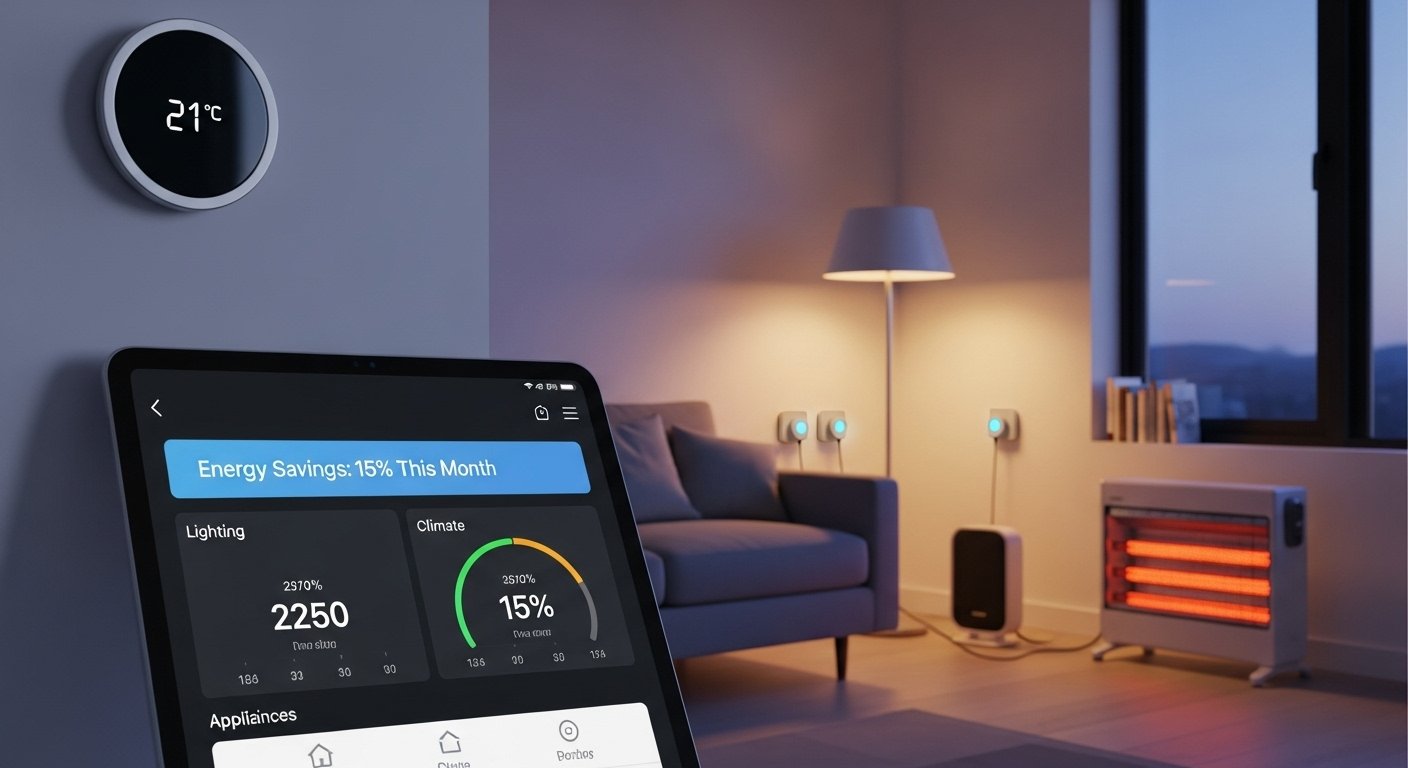
Beyond the Hacks: Understanding the Broader Benefits of Smart Home Energy Saving
The immediate financial relief from lower utility bills is a compelling reason to embrace smart home automation. However, the benefits of smart home energy saving extend far beyond your wallet. By significantly reducing your household’s energy consumption, you’re also making a tangible positive impact on the environment. A lower energy footprint translates into reduced greenhouse gas emissions and a smaller carbon footprint, aligning your home with global sustainability efforts [6]. This is how smart technology contributes to energy savings on a larger scale.
Furthermore, an automated energy conservation home enhances comfort and convenience. Systems that adapt to your schedule, anticipate your needs, and manage themselves free up your time and mental energy. You gain greater control over your living environment, often through intuitive apps or voice commands, leading to a more streamlined and responsive home. The overall result is a smarter, greener, and more comfortable living experience, solidifying the appeal of a smart home for lower utility bills and improved quality of life.
The Cost of Smart Home Energy Savings: An Investment in Your Future
While the prospect of smart home energy savings is appealing, many students and homeowners may wonder about the initial investment. It’s true that setting up a smart home requires an upfront cost for devices and potentially installation. However, it’s crucial to view this as an investment that yields significant returns over time. The smart home cost savings energy generated through reduced utility bills often offsets the initial expenditure within a few years, making it a financially sound decision in the long run.
When considering the best smart home devices for energy efficiency, focus on those with the most significant impact, such as smart thermostats and smart lighting, which offer substantial percentage savings. Look for products certified by programs like ENERGY STAR, which verifies energy savings based on extensive field data 12]. The U.S. Environmental Protection Agency (EPA) and the U.S. Department of Energy (DOE) actively promote these systems, recognizing their potential to empower consumers to save energy and money. You can explore a wide range of smart appliances and home management products, including those with connected functionality, on the official U.S. Department of Energy website: [https://www.energy.gov/energysaver/shopping-appliances-and-electronics#smart [13]. Investing in energy saving smart technology today is an investment in a more affordable and sustainable future for your home.
Conclusion
Embracing smart home automation is a proactive and intelligent way to achieve significant smart home energy savings. By implementing these seven hacks – from optimizing climate control with smart thermostats to eliminating phantom loads with smart plugs and leveraging integrated platforms – you can transform your living space into a beacon of energy efficiency. The data consistently shows the potential for substantial reductions in energy consumption and utility costs, alongside valuable environmental benefits. As you embark on your journey toward a smarter, more sustainable home, remember that every smart device and every automated action contributes to a brighter, greener, and more economical future.
Key Takeaways
- Smart home automation can reduce overall energy consumption by an average of 30% and significantly lower utility bills.
- Smart thermostats are highly effective, saving 10-15% on heating and cooling costs annually.
- Smart lighting systems offer substantial savings (35-70%) through automation, dimming, and motion sensing.
- Smart plugs eliminate wasted energy from standby power (phantom load) by allowing remote control and scheduling.
- Automated window coverings and geofencing dynamically optimize indoor climate based on occupancy and external conditions.
- Home energy monitoring systems provide crucial data to identify and address energy waste.
- Integrating all smart devices through a central platform maximizes efficiency and convenience.
Frequently Asked Questions
Do smart homes really save energy?
Yes, smart homes demonstrably save energy by automating and optimizing the use of various household systems. They can reduce overall energy consumption by an average of 30% by intelligently managing heating, cooling, lighting, and appliances based on real-time data and occupancy [14].
What smart devices save the most energy?
Smart thermostats, smart lighting systems, smart plugs, and automated window coverings are among the top smart devices for energy savings. Smart thermostats can save 10-15% on heating and cooling, while smart lighting can reduce lighting costs by 35-70% [10].
How can smart devices help reduce utility bills?
Smart devices reduce utility bills through automated energy management, remote control, and real-time monitoring. They optimize energy usage by turning off lights in empty rooms, adjusting thermostats when you’re away, eliminating standby power, and providing data to make informed consumption choices [1].
Do Smart Homes Save Money?
Absolutely. Smart homes save money primarily by reducing energy consumption, which directly lowers utility bills. For instance, smart thermostats alone can save approximately $140 per year on energy bills, and smart lighting systems can cut lighting costs by up to 70% [10].
Are smart thermostats worth it for energy savings?
Yes, smart thermostats are highly worth it for energy savings. They can save, on average, between 10-12 percent on heating and 15 percent on cooling, translating to significant annual savings. Their ability to learn preferences, respond to occupancy, and allow remote control ensures optimal climate management and reduced energy waste [10].
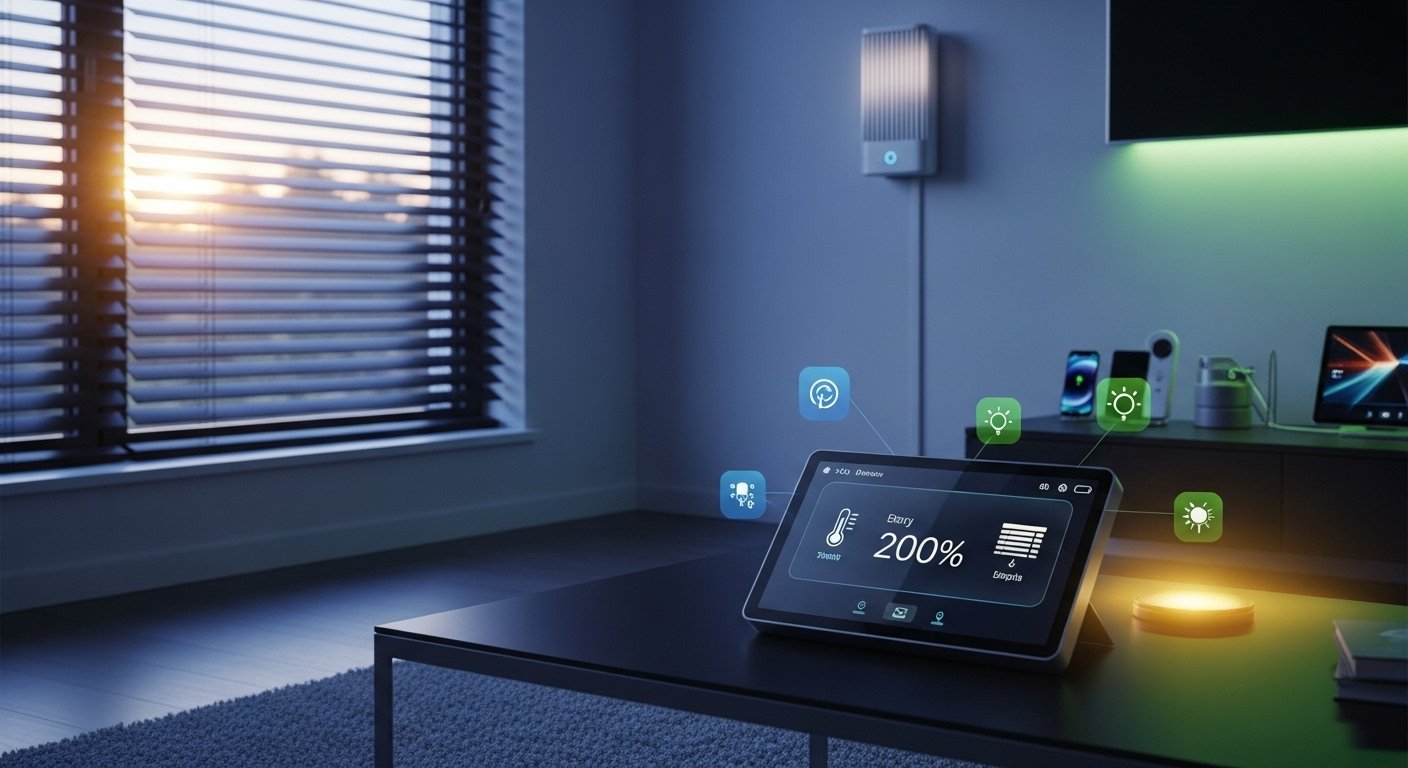
Leave a Reply